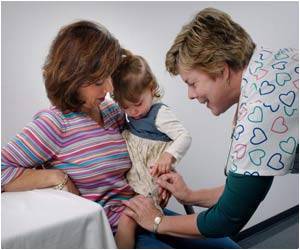
In order to determine the usage of high-cost imaging in cancer patients at the end of life, Yue-Yung Hu, M.D., M.P.H. and colleagues in the Center for Outcomes and Policy Research at Dana-Farber Cancer Institute, the Center for Surgery and Public Health at Brigham and Women's Hospital, and Wisconsin Surgical Outcomes Research Program at the University of Wisconsin, looked at claims within the Surveillance, Epidemiology, and End Results (SEER)-Medicare database between 1994 and 2009 for computed tomography, magnetic resonance imaging, positron emission tomography, and nuclear medicine scans for patients diagnosed with stage IV breast, colorectal, lung, or prostate cancer between 1995-2006. The rate of imaging per-patient per-month of survival was determined for each phase of care. For reference, trends in imaging use in early-stage patients with the same tumor types during the same time period were also considered.
The researchers found that most patients with stage IV breast, colorectal, lung, and prostate cancer undergo high-cost imaging procedures throughout the course of their care and that the usage of imaging has steadily increased between 1995 and 2006. The increase may reflect a lack of guidelines in this area or the use of imaging to guide symptom management, detect disease progression and assess treatment effect. "Because scans help clinicians determine whether a change in (or cessation of) treatment is indicated, the expanding use of advanced imaging in stage IV disease is likely a manifestation of the increasing number and types of treatment options available to these patients," the authors write. "Imaging, although it often leads to (appropriate) palliative measures, may also distract patients from focusing on achievable end-of-life goals, require them to spend more of their limited time in medical care settings and/or provoke anxiety." The authors point out the importance of examining such patient-centered outcomes in future research to define the role of advance imaging in Stage IV solid tumors.
In an accompanying editorial, Drs. Robin Yabroff and Joan Warren, of the Health Services and Economics Branch at the National Cancer Institute, feel that assessing the appropriateness of care for patients with stage IV disease is complex. "Physicians tend to overestimate survival for terminally ill cancer patients, which may influence their treatment and related imaging recommendations," the editorialists write. "Development of practice guidelines for advanced imaging in patients with stage IV disease, with explicit statements about the state of evidence will be critical, particularly for care outside of the window surrounding patient diagnosis."
Source-Eurekalert














